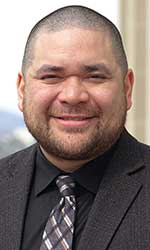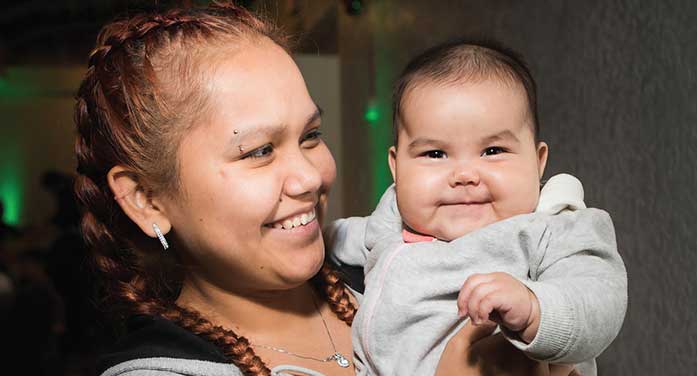On Canada’s newly-declared National Day for Truth and Reconciliation, we asked Dr. Alika Lafontaine to take stock of the state of reconciliation in health care.

Dr. Alika Lafontaine
Lafontaine, an anesthesiologist at Queen Elizabeth II Hospital in Grande Prairie and associate clinical professor in the University of Alberta’s Faculty of Medicine & Dentistry, was recently chosen as the first-ever Indigenous president-elect of the Canadian Medical Association. He will officially start the job in August 2022.
Born and raised in Treaty 4 territory, Lafontaine has Anishinaabe, Cree, Métis and Pacific Islander ancestry. He had a stutter as a child and was diagnosed with a learning disability. He was told he would not graduate high school.
He has held numerous leadership roles, including with the Indigenous Health Alliance, Indigenous Physicians Association of Canada and the Alberta Medical Association.
Lafontaine and his brother, a dentist, co-founded Safespace, an app for Indigenous people to report racism within the health-care system.
Lafontaine says the discrimination he experienced, along with insights he has gained as a physician in rural Alberta, give him a unique perspective on the health-care system. Here, in his own words, he shares his reflections on what it will take to overcome health inequities and bring about meaningful reconciliation in health care.
Anytime you’re talking about system change, you start off with the initial phase where you’re trying to socialize and mobilize people to commit to the change that needs to occur.
And then you move into a wait-and-watch period where people are patiently awaiting the change. We’ve seen this happen with patient-centred care; we’ve seen this happen with quality improvement.
In the current context of COVID, reconciliation is hitting a bit of a stumbling block. It’s been taken down on the priority list. Our systems are under a lot of stress.
It’s become a part of the way that we talk – that reconciliation is important. Now people are asking: where’s the action that goes behind reconciliation?
The pandemic has really shifted access to care across Canada to the point where, in some locations, we’re actually rationing versus triage. We’re asking ourselves who will get care, not just who gets care first.
We’ve been rationing care within Indigenous communities for decades.
Here’s an example: A company that sets up a logging camp close to a First Nation, required under the health and safety acts in most provinces, has to ensure that they have 24/7 physician or nursing coverage and access to emergent care on site, and a clear plan for what will happen if someone does get sick and has to be transported out. And they’re required to fully fund that.
And yet, the community directly adjacent to that logging camp does not have access to most or all of those things.
The fact that there’s often no doctors, access to resuscitative and emergency services is absent; there’s no one you could call when you have a critical event.
Rationing like this is a foreign concept to the average Canadian patient who’s not Indigenous. But that is the lived reality for many Indigenous peoples.
I hope that since we’re all now going through the same COVID storm, and we’re all feeling the effects of what it’s like to not have access to care, people can bring that experience into understanding what Indigenous peoples go through every day.
This really is a choice.
There’s a common misunderstanding with Indigenous health that somehow the issues are so opaque or not understandable that we have to look at them in different ways.
But it’s really just a magnification of existing problems within the health-care system. And the solutions rely on the same principles that we know work in the mainstream system.
What do we know really drives positive patient outcomes in the mainstream system? We know that it’s that relationship between patients and their providers.
It’s making sure that there’s a feedback mechanism, so when patients have negative experiences, persons who are involved or can change those experiences receive that feedback and do something about it.
It’s also providing adequate infrastructure relative to local needs.
One of the things that I hope all patients have realized, both Indigenous and non-Indigenous, in this pandemic is that if money needs to be spent, it will be found. When we say that we can’t afford to do something, what we’re actually saying is we’re making the choice not to fund it properly.
People underestimate the resources that are required to overcome the effects of colonization and racism that are layered on top of just the average patient who has a barrier to care.
There’s really good work that’s being done by Indigenous communities across the country. I think about health regions that have been set up in Manitoba (First Nations Health and Social Secretariat of Manitoba). They’ve taken federal funding on health transformation and started to build on community expertise, including Indigenous physician expertise, to create more patient-centred environments that are free of racism and more centred on what people actually need.
There’s the Indigenous primary health care clinics (Indigenous Primary Health Care Council), 28 sites across Ontario that collaborate with each other.
The real question is whether or not patient outcomes will improve over the next five years. It’s too early to know. We need to see the data.
Having persons who have that lived experience at the front line to help people understand why the system doesn’t work helps inform better decisions. One of the things that I have found in my own practice is that if the system works for you, you don’t really care who’s in charge because it works.
Will a health region ever fully transfer all of its resources to Indigenous communities and surrounding areas? Probably not. That has to do with policy and legislation and the way that monies are transferred from different levels of government. When we talk about community-led health care, decisions must be tied to resource allocation.
The CMA is positioned to lead and support conversations related to reconciliation, which cuts across different layers – the health of people, the health of the workforce and also the functioning and sustainability of the health system.
There’s often a call to move politics out of health. In reality, health is inherently political. It’s always about choices.
We talk about systems as if they’re impossible to understand – complex, autonomous beings – when in reality systems are just made up of us.
A big part of reconciliation comes with shifting what we think is normal, and that’s going to require work from a lot of different sides. But I think we’re starting to see that shift. This is not something that we would have even talked about 10 years ago.
One of the things that I was always taught, and that’s present within Indigenous philosophy, is that there’s a plan to ensure that we all walk a path that can make a difference. And if we don’t walk it, someone else will. Understanding how each of us can make a difference day to day aggregates into this larger impact that then spreads.
I think all of us, working together, will help to carry the heavy load.
– This interview has been edited for length and clarity.
| By Gillian Rutherford
This article was submitted by the University of Alberta’s Folio online magazine. The University of Alberta is a Troy Media Editorial Content Provider Partner.
© Troy Media
Troy Media is an editorial content provider to media outlets and its own hosted community news outlets across Canada.


